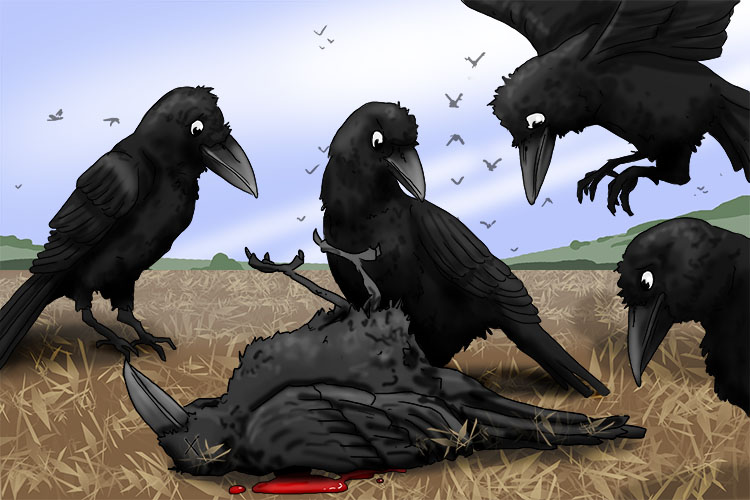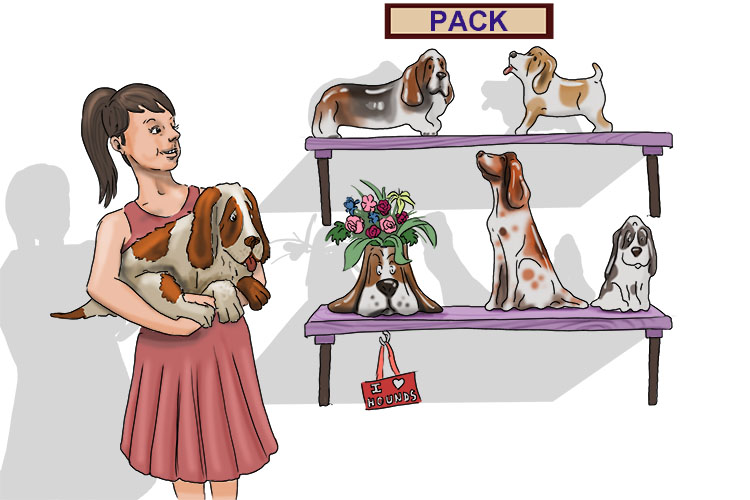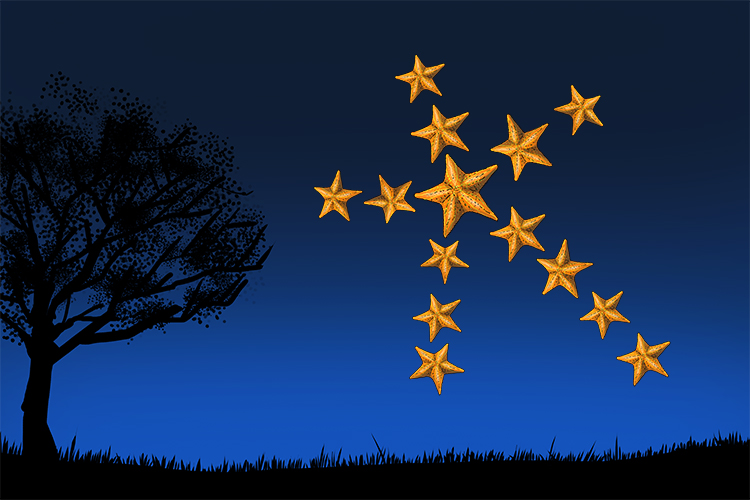Collective Nouns
Long ago, someone decided to have some fun with the English language. Whoever it was invented names for groups of things. For instance, for a group of geese, they came up with "gaggle", and for a group of crows, they decided on "murder".

Who did it? Murder of crows.
A gaggle of geese and a murder of crows are examples of collective nouns. There are hundreds more – for instance, a squabble of seagulls, a parliament of rooks, an embarrassment (yes, it's true!) of pandas, and an unkindness of ravens.
"Collective" is very similar to "collection", and a "collective" noun refers to a collection (or group) of things of the same type. "Noun" simply means "name" so, for instance, the noun (name) for a collection (group) of bees is "swarm" (a swarm of bees).
To remember the term "collective noun", imagine a woman who collected hounds (collective noun) and displayed them all under a single name (in this case, "pack"):

No one knows exactly where all the collective nouns came from. The first list of collective nouns appeared in the 15th century in a book about hawking, hunting and heraldry, but the inventors of the names remain anonymous.
Of course, the list has been added to in more recent times – the English language is always changing and gaining new words.
Here at Mammoth Memory, we noticed that some of the collective nouns are what we call "mnemonic" – they serve as a reminder, or memory aid, for the group to which they relate. For instance, a "squabble" of seagulls almost sums up the nature of those squawking scavengers.
What about a "constellation" of starfish – can you see those five-armed marine invertebrates lighting up the night sky?

Then there's an "ambush of tigers – can you see those striped schemers lying in wait for their unsuspecting prey?
However, most collective nouns are less mnemonic, or hold no clue at all about what they relate to. For instance, would you have guessed that a group of goldfish is a "troubling"?
So, here it is – Mammoth Memory's A to Z guide to remembering collective nouns. If you didn't know what animals are collectively known as a bale or which sea creatures collect in a fluther, you've come to the right place!
NOTE:
We have only given one collective noun for each letter of the alphabet. There are many, many more, some that you might know and others that you could discover for yourself.




